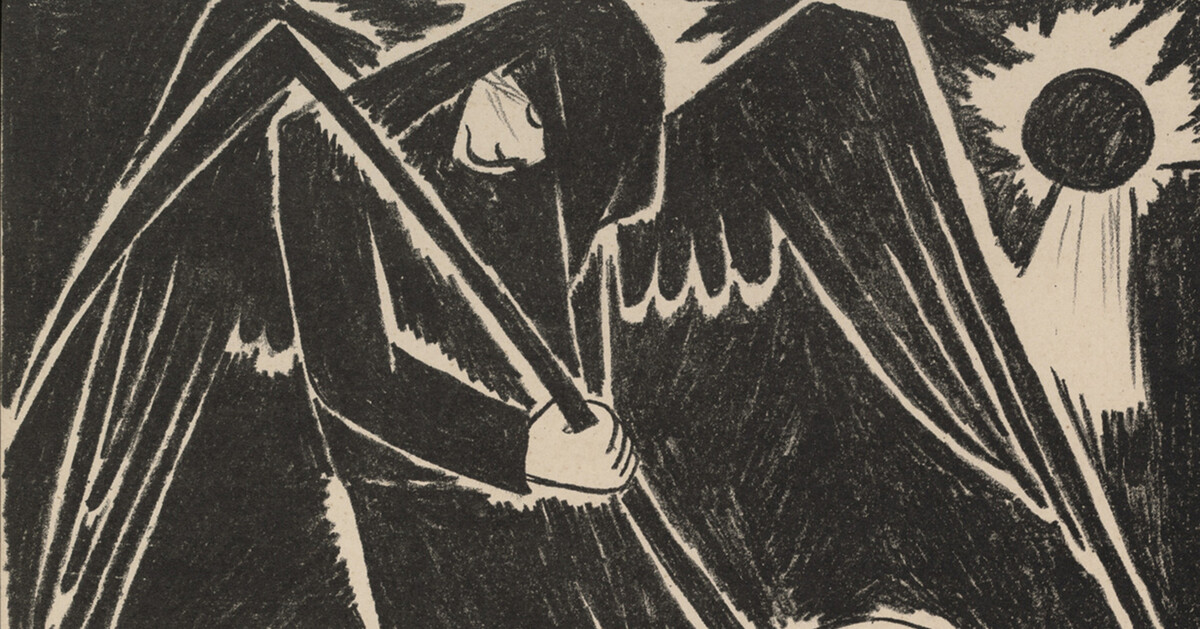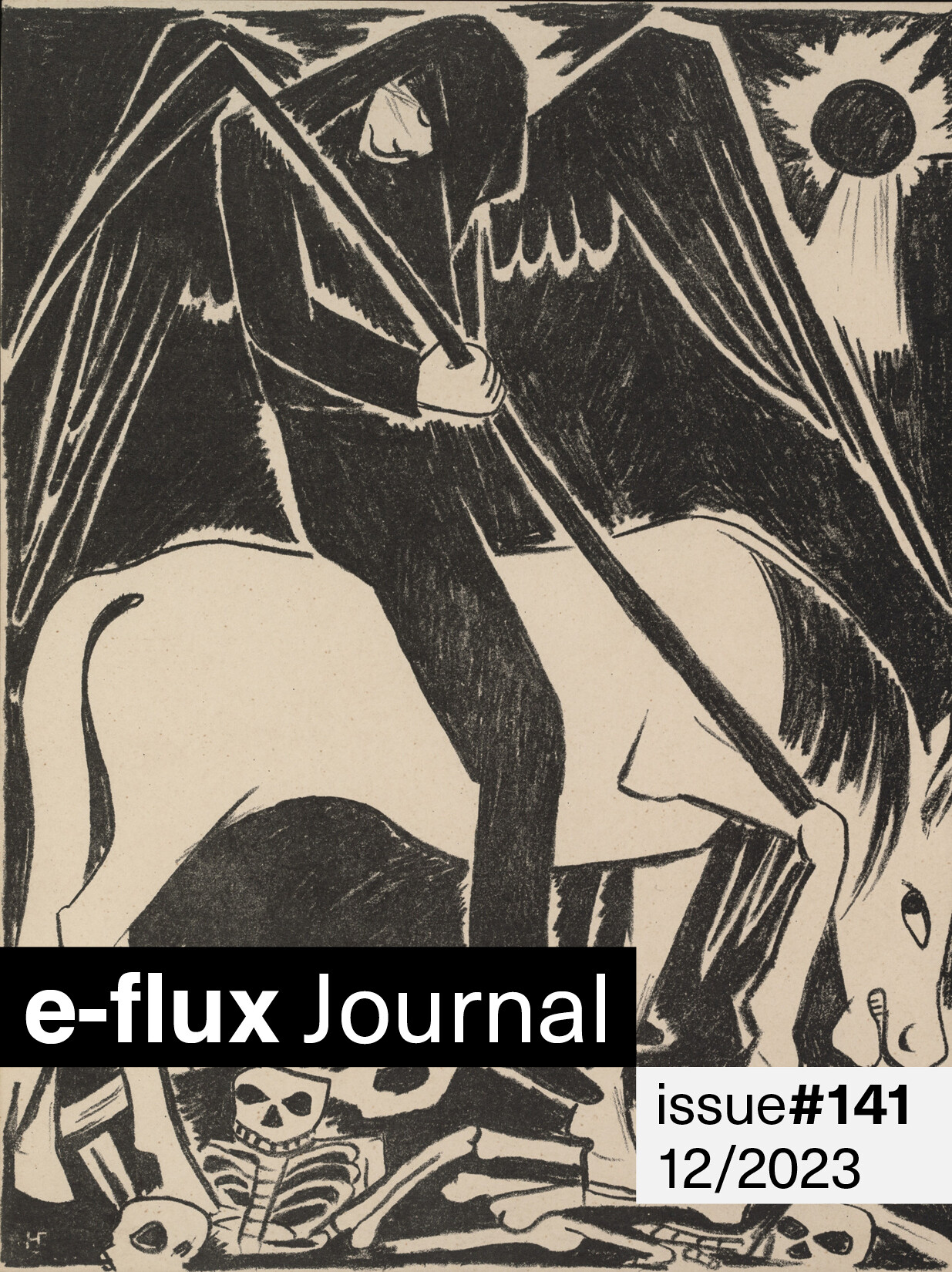with Sami Khatib, Evan Calder Williams, Nkule Mabaso and Serubiri Moses, Amol K Patil, Xinyue Liu, Dorota Jagoda Michalska, Sonia D’Alto, Matteo Pasquinelli, David Morris, and Manuel Borja-Villel and Vasıf Kortun
Last month, Documenta 16’s Finding Committee resigned en masse following the resignations of Bracha L. Ettinger and Ranjit Hoskoté. In his written resignation, Hoskoté explained the high irony of being accused of anti-Semitism for having signed an online petition against an event hosted by the Israeli Consulate to India in 2019. The event drew an alliance between Zionism and Hindutva, the Hindu ultranationalist ideology that was inspired by European fascism and that proposed Hitler’s policy for Jews as a method for dealing with Indian Muslims. Yet Germany’s culture minister, Claudia Roth, denounced the obscure 2019 petition Hoskoté signed as “clearly anti-Semitic” for describing Zionism as “racist” and Israel as a “settler-colonial apartheid state,” threatening to withdraw state funding if Documenta didn’t cut ties with Hoskoté.
The delirium of accusations and cancellations in Germany now reads like the plot of a Philip K. Dick novel, where a creeping suspicion is conveniently misunderstood to such an extreme that it expands uncontrollably into its own reality or totalitarian system. In the US, the heads of three major universities were called before a Republican-organized congressional hearing to answer to how their campuses harbor anti-Semitism in demonstrations against Israel’s military campaign in Gaza. In fact, Trump’s Republican supporters—including those who presided over the hearing—advocate the actually racist and anti-Semitic theory of a “Great Replacement” plot by Jews to replace white Europeans with nonwhite immigrants. The method seems clear: to intimidate progressive institutions of art or learning into conflating anti-Semitism with opposition to the actions of Israel’s right-wing government. A serious problem arises when such an undeniably ultranationalist agenda creates a massive opening for growing ethno-nationalist and white-supremacist movements in the US and Europe, whose increasing expressions of actual anti-Semitism go unchecked under their banner of support for the State of Israel.
In this issue of e-flux journal, Sami Khatib recalls Bertolt Brecht’s non-character from the dire early 1930s: Herr Keuner, “the thinking man.” From either side of a century ago, Brecht, Walter Benjamin, and Rosa Luxemburg remain clear-eyed critics who make wagers for the survival of thought and art past the dawn of totalitarianism and contemporary fascism. Keuner—mister nobody—points to Walter Benjamin’s plea to replace doxa with an impoverishment of theory that can meet the realities of impoverished experience. For Benjamin, only a new, positive iteration of the “barbarian” could derail a capitalist, war-ridden train otherwise speeding toward certain wreckage. “Now,” writes Khatib, “in post-bourgeois capitalism and with the rise of a new fascism, the figure of the barbarian reveals its dialectical nature, allowing for paradoxical positions such as barbaric salvage, regressive progression, and anti-utopian utopia.”
Meanwhile, Evan Calder Williams begins his essay, which signals a larger editorial project, by tracing the meanings of “paralysis” as a biopolitical limit concept, an interval to flows and a threat or promise of disability, but also an invitation to corporeal thinking.
Nkule Mabaso and Serubiri Moses’s text on the rise of “citational practices” reexamines a panel the authors and their collaborators held to debate the broadening concept of citation in South African contemporary art and beyond. In contemporary citation, historical artists and writers whose movement was severely limited—for example by apartheid—begin to find some posthumous transnational motion and solidarity. In a short oral history, the Mumbai-based performance artist Amol K Patil speaks about crafting new visual, gestural languages from sources spanning his collaborations with fellow artists who speak only visually, the pages of his father’s experimental theater scripts, and observations on the changing kinetics of daily caste-informed gestures in India.
Xinyue Liu locates the potential for spectral justice in photographic sightings of ghost species—extinct animals that somehow reappear in the form of blurry images. Dorota Jagoda Michalska traces folwark modernity and the movement of grain across Poland, Lithuania, and Ukraine. Both Liu and Michalska, in their own ways, insist on extended exercises of being led toward urgent new vision by more-than-human entities: ghosts in one case, grain in the other.
Sonia D’Alto employs an imperative from poesis to reconsider the feminist mythmaking of the 1970s Italian collective Le Nemesiache. In an echo of Denise Ferreira da Silva, D’Alto proposes using “poesis to disrupt the ‘Ordered World.’” To this end, she sees in feminist mythmaking an art of interruption that can “recast space, chronology, and subjectivity.” In a chapter on the “Automation of General Intelligence” from his new social history, The Eye of the Master, Matteo Pasquinelli urges the construction of a collective counter-intelligence based on confronting the very epistemology of AI.
Looking back to the twentieth century in what could be an instructive read of the twenty-first, David Morris considers Artists for Democracy’s place in the project of Indigenous internationalism. In the 1970s, Artists for Democracy explored the potential to express “an expansiveness of the ‘we’ in ‘what we are today.’” Could “we,” in the present, also begin exiting the lures of contemporary factionalism and commit instead to expanding the messy possibilities of our “shared presence in non-unity”?
In our 141st issue, we also present Manuel Borja-Villel and Vasıf Kortun’s joint proposal for the upcoming Documenta 16 in Kassel—a proposal that, for various reasons, could not be considered by the edition’s Finding Committee. We are grateful to its authors for offering a rare view into an imagined—but so far unrealized—collaboration to signal the spirit, intentions, and key references for a possible edition of Documenta.
—Editors
Sami Khatib—A Positive Concept of Barbarism: Benjamin and the Consequences
Benjamin’s concept of experience, Erfahrung, remains speculative in the best non-positivist sense of the word. Its speculative ground, however, exceeds the speculations of theory. But what is left for the materialist intellectual who is to theorize the political, economic, social, and aesthetic conditions of poverty, deprivation, and precarity in the age of “very-late” capitalism? Eventually, Benjamin’s materialist argument comes down to a simple insight: the combination of poor experience and rich thought is poor in social consequences. Instead of gradually enriching thought through inclusive multidirectionality, radical thought must insert reductive shortcuts, one-sided interruptions.
Evan Calder Williams—On Paralysis, Pt. 1
How exactly does “paralysis” as a term and trope get used, beyond reference to actual bodily paralysis? In its most basic sense, it names a condition of inaction that persists against any intention to act or react. More specifically—and counter to the way that corporeal paralysis is often experienced and culturally envisioned as permanent, marking a catastrophic shift in how a life will be lived from that point on—paralysis as a figure of political and social thought instead frames a distinct kind of reversible breakdown, one that is not understood as violence, or even damage, per se. Rather, it implies a temporary interruption of the expected connections between thought and action.
Nkule Mabaso and Serubiri Moses—Cite, Sight, Site: Notes on Citation as a Gesture of Reproducibility
By invoking eighteenth- and nineteenth-century history—such as the Haitian Revolution and the Chimurenga in Southern Africa—and transnational trajectories not only of artists and writers but of exhibitions, the panel on “Citational Practices” moved away from a tendency towards the nationalization of discourse. This movement is one of the gestures that makes solidarity and reproducibility possible.
Amol K Patil—Gesture as a Visual Language
As I continue to deepen my understanding of visual language, another source of inspiration is the sense of performativity inherent to gestures. This performativity is evident in the everyday gestures of people at work, while walking, or otherwise getting around the city. I see people as performative bodies, and I also believe that their daily movements themselves embody a kind of larger performative gesture.
Xinyue Liu—Sightings
A photograph of a Yangtze River dolphin, commonly known as the baiji, was printed in one of my textbooks when I was a pupil in Dalian, China. I remember staring at a small white back submerged in a tideless pool. It was 2007, and our teacher informed us that the animal we were looking at was near extinction. The last known baiji had died in captivity five years prior. When I saw the photograph, I did not realize I was looking at a ghost—not just of an individual animal, but of an entire species.
Dorota Jagoda Michalska—To Follow the Grain
The relationship between Poland and Ukraine remains an ambiguous and vexed one. The border between the two countries embodies and replicates multiple divisions that continue to split the region, but also bind it in an indissoluble knot. The war in Ukraine, like past conflicts, has created a political alliance rooted in shared priorities and a deep-seated fear of Russian expansionism and imperialism. However, this solidarity is fragile and, as Warsaw’s ban on Ukrainian grain makes abundantly clear, subject to national political and economic interests.
Sonia D’Alto—Le Nemesiache: Erupting Feminist Cosmologies
In 1969, the same year as Pasolini’s Medea, Lina Mangiacapre returned to Naples after she had participated in the large 1968 student movements in the north of Italy. She had graduated with a degree in philosophy but since the revolts had devoted herself to painting under the pseudonym Màlina. Back in her hometown, energized surely by the magnitude of student and worker uprisings that would inaugurate a decade of country-wide insurgency, she cofounded the feminist collective Le Nemesiache (named for the goddess Nemesis), which had a clear goal: they “intended to bring myth back into the world.”
Matteo Pasquinelli—The Automation of General Intelligence
What is needed is neither techno-solutionism nor techno-pauperism, but instead a culture of invention, design, and planning that cares for communities and the collective, and never entirely relinquishes agency and intelligence to automation. The first step of techno-politics is not technological but political. It is about emancipating and decolonizing, when not abolishing as a whole, the organization of labor and social relations on which complex technical systems, industrial robots, and social algorithms are based—specifically their inbuilt wage system, property rights, and identity politics.
David Morris—Precarious Solidarities: Artists for Democracy in Historical Perspective, Part 2
Artists for Democracy’s commitment to the experimental took many forms. In artistic terms, it formed an uneasy alliance with various “traditional,” “folk,” or “popular” forms. This can be understood as a pragmatic extension of Artists for Democracy’s “broad front” politics, to be as inclusive as possible with respect to artists and audiences, but it can be also understood in terms of aesthetic strategy.
Manuel J. Borja-Villel and Vasıf Kortun—Proposal for Documenta 16
Traditionally, the importance of Documenta has been its ability to offer visitors tools to understand the world. But how do we continue fulfilling that task at a time when everything seems to immediately become a commodity, a flurry of infinitely interchangeable images that are neither tied to any substantial social relationship nor anchored in any particular territory or community? How do we accomplish that goal in a historical moment characterized by the extreme degradation of the public sphere and its democratic representations?


